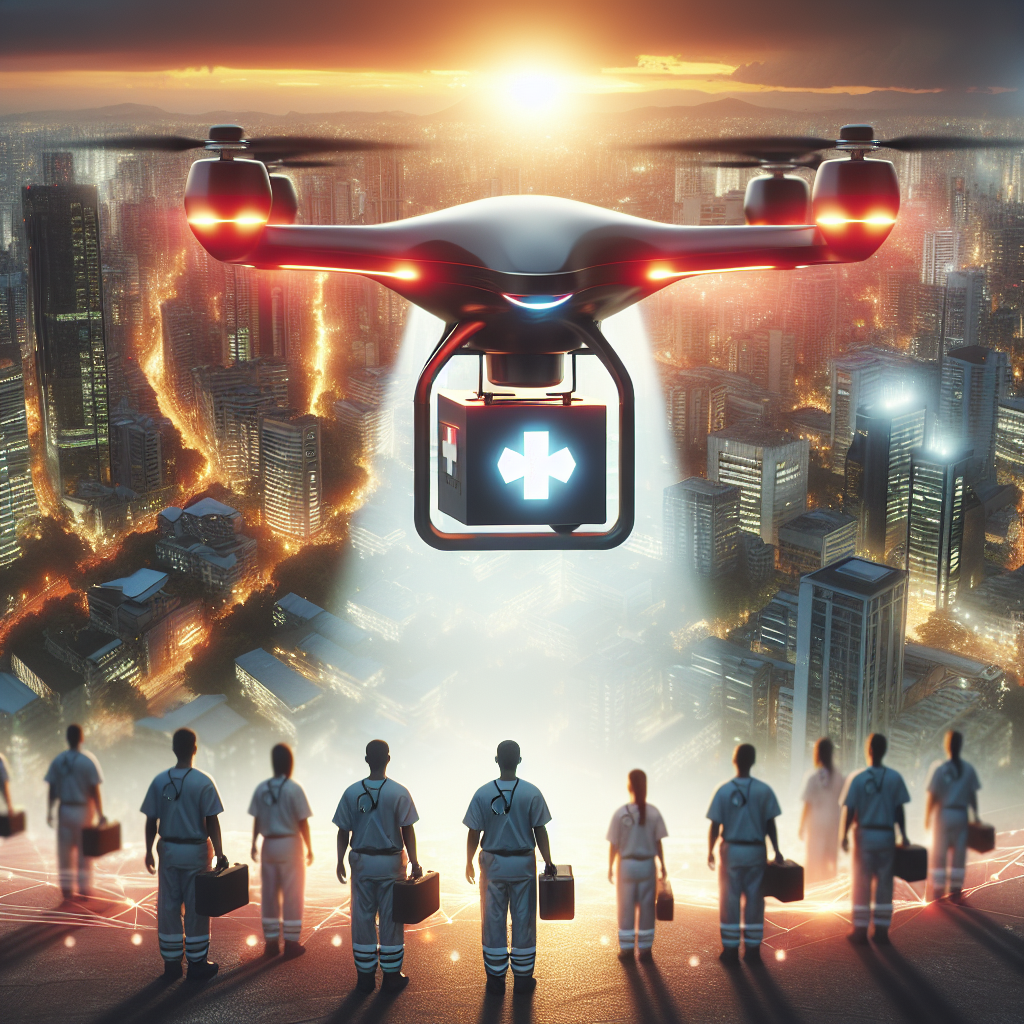Introduction to the Role of Drones in Emergency Medicine
In recent years, drones have transitioned from primarily military devices to versatile tools used in various sectors, including healthcare. One particularly promising application is in emergency medical services (EMS), where drones deliver critical medical supplies, blood, and even automated external defibrillators (AEDs) to remote or hard-to-reach areas. This exploration into the future of emergency medicine examines how drones could continue to transform healthcare delivery.
Current Applications of Drones in Emergency Medical Services
The integration of drone technology in EMS has been instrumental in enhancing the speed and efficiency of medical response. For instance, in rural or congested urban areas where ambulance access is delayed, drones equipped with AEDs can be dispatched to a patient experiencing a cardiac arrest, significantly reducing response times and increasing survival rates. Studies have shown that drones can reach emergency sites more quickly than traditional emergency services in many cases, providing critical interventions within the golden hour of emergency care.
Case Studies and Success Stories
Several pilot programs around the world have demonstrated the effectiveness of drones in emergency medicine. In Sweden, drones deployed to deliver AEDs to out-of-hospital cardiac arrest scenes have cut response times by an average of 16 minutes. Similar programs in Rwanda and Ghana have successfully used drones to distribute blood products and vaccines, addressing critical delays in medical supply chains.
Challenges and Limitations
Despite their potential, the use of drones in emergency medicine faces several challenges. Regulatory hurdles, including airspace restrictions and privacy concerns, remain significant obstacles. Additionally, the technology requires further refinement to improve payload capacities, flight endurance, and reliability under adverse weather conditions.
Technological and Regulatory Barriers
The advancement of drone technology is ongoing, and while strides have been made, there is still a need for enhanced battery life and better navigation systems, especially in densely populated areas. On the regulatory front, governments and aviation authorities are working to create frameworks that ensure safe and efficient drone operations without compromising public safety or privacy.
Future Prospects of Drones in Emergency Medicine
Looking ahead, the future of emergency medicine could see drones becoming fully integrated into emergency response systems. Innovations such as swarm technology, where multiple drones operate in coordinated efforts to deliver medical supplies, could further enhance their effectiveness. Furthermore, as artificial intelligence and machine learning technologies advance, drones could undertake more complex tasks, such as preliminary patient assessments and monitoring, potentially transforming the landscape of emergency medical services.
Potential for Global Impact
In developing countries, where healthcare systems often struggle with infrastructure challenges, drones offer a viable solution to quickly and efficiently deliver medical aid. As drone technology becomes more cost-effective, it could play a critical role in global health, particularly in disaster response scenarios and in combatting epidemics by delivering vaccines and collecting medical samples.
In conclusion, the integration of drones into emergency medical services represents a frontier in healthcare that could significantly enhance the efficiency, reach, and quality of medical response. While there are still hurdles to overcome, the potential for drones to save lives in critical moments is immense, pointing to a promising future of emergency medicine.


